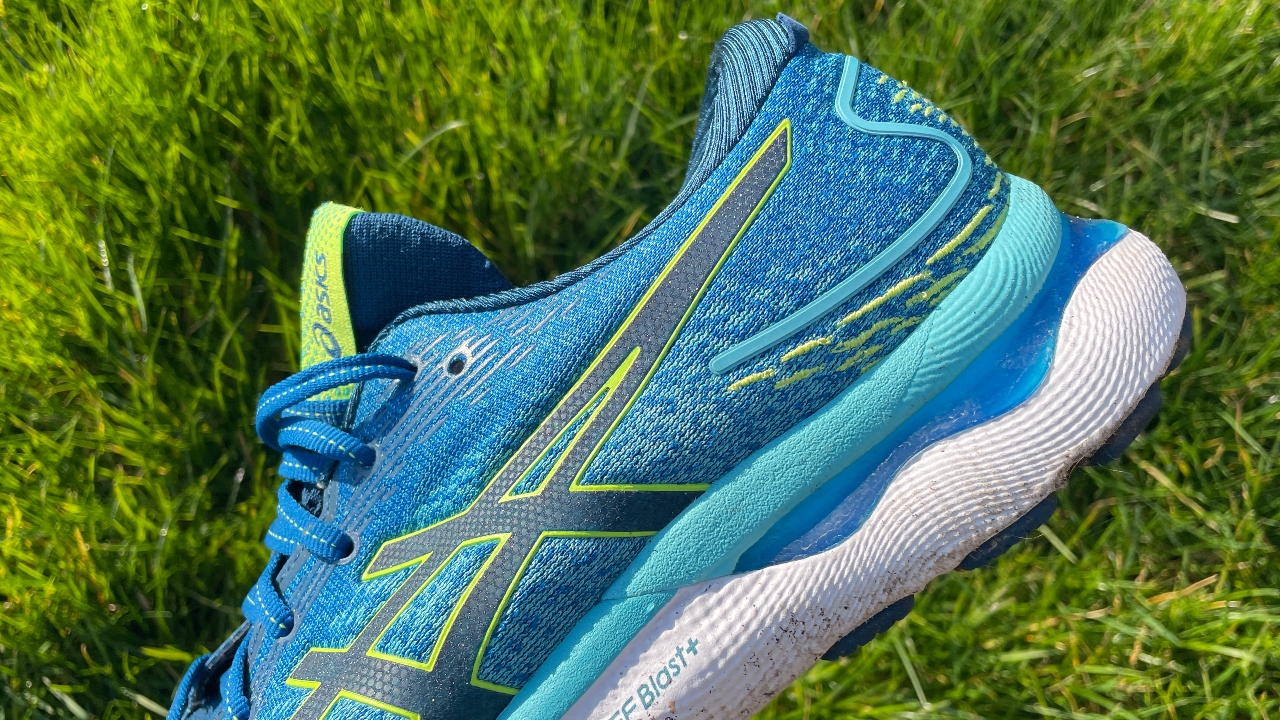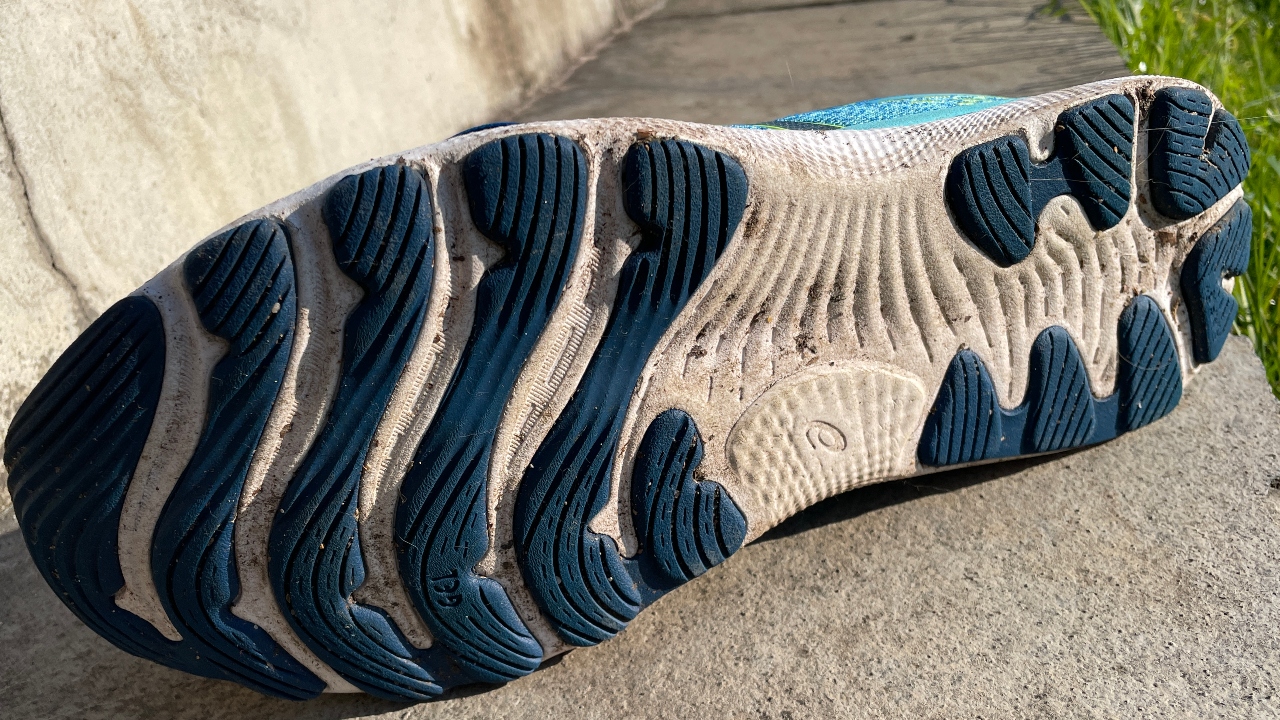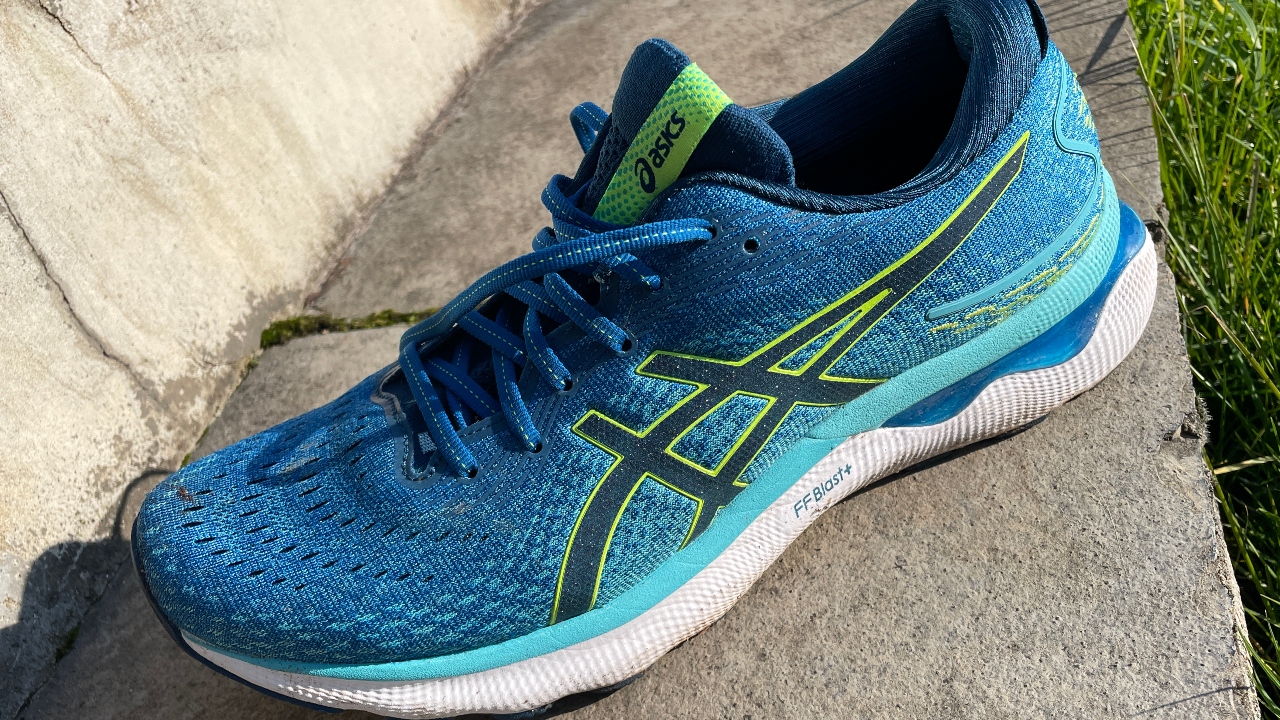Our Verdict
A softer, springier midsole foam means the Nimbus 24 is a more exciting daily training option than previous versions.
For
- Bouncy Flytefoam Blast+ midsole
- Durable outsole that grips well
- Lighter than Gel Nimbus 23
Against
- Still slightly heavy for speedy running
- Could be more comfortable for long runs
- More expensive RRP than Gel Nimbus 23
You can trust Coach
It’s rare that a long-running line of shoes like the Asics Gel Nimbus gets an overhaul, because so many runners already like the shoe and want updates to provide a similar feel. However, occasionally, it’s worth breaking the mould because a shoe line can start to feel stale and fall behind the times.
With the Gel Nimbus 24, Asics has made a substantial change by introducing a new midsole foam that’s lighter, softer and bouncier than the materials used in previous versions. While some may find it less stable than in the past, the new model is now a more exciting daily trainer, if not quite one of the best running shoes.
- NEWSFLASH: Asics Gel-Nimbus 25 Vs Asics Gel-Nimbus 24: First Look At The All-New Nimbus
Asics Gel Nimbus 24: Price And Availability
The Gel Nimbus 24 is available on the Asics website and costs £165, which is £10 more than the Gel Nimbus 23.
Design And Fit

The Gel Nimbus 24 has the same stack height and drop as its predecessor. The men’s version is 26mm in the heel and 16mm in the forefoot for a 10mm drop, and the women’s 28mm in the heel and 15mm in the forefoot for a 13mm drop.
However, the new foam in the midsole has brought the weight down, with my UK size 9 weighing 304g compared with 324g for the Gel Nimbus 23. It’s still not a lightweight shoe, but the decrease in weight and updated midsole make it more versatile.
The upper is mesh with a stretchy tongue that holds the midfoot comfortably and securely. There is plump padding around the heel, though it’s not as plush as on some cushioned shoes like the Brooks Glycerin line.
In the midsole there are two layers of Asics’s new Flytefoam Blast+ (FF Blast+) foam, which is a softer and springier version of the material used in the Novablast line of shoes. The top layer of the foam is firmer than the bottom, which combines with a plastic Trusstic plate in the midfoot to ensure the ride of the shoe is stable despite the introduction of the new soft foam. The women’s version of the shoe has a softer top layer of FF Blast+ and the plastic plate is a different shape tailored to women’s feet.
There is also some of Asics’s Gel material around the heel and inside the forefoot of the shoe. This has a slightly firmer feel than the foam around it.
The outsole has thick rubber sections in all the key wear areas to make the Nimbus 24 a durable shoe, and I had no problems with grip on the road in wet conditions.

How I Tested The Asics Gel Nimbus 24
The Nimbus 24 is built to be a workhorse that can handle miles of daily training. I mainly used it for my base runs at easy or steady paces, which ranged from 14km to 24km in length. I also took it down to the track for one hard session doing 800m reps to see how it handled faster running.
Running Performance
I found the Gel Nimbus 23 to be a solid but unremarkable daily trainer, but it was clear from the first few steps in the Gel Nimbus 24 that the new shoe offers a more exciting ride. While it’s not as bouncy as the Asics Novablast 2, it provides a springy, protective ride that makes it more enjoyable than its predecessors for daily training.
It was not as soft as I expected though, and over the course of my first run in the shoe – a fairly miserable 24km slog through the strong winds that hit the UK in mid-February – I started to experience discomfort under the forefoot of my left foot. This didn’t come back as strongly in shorter runs in the shoe, but overall I’d say that the Nimbus 24 is not as all-out comfortable as something like the Brooks Glycerin 19, and is more of a daily trainer rather than a cushioned shoe purely designed for easy runs.

During longer runs I found that the shoe lost some of the bounce you can feel when you first put it on. The firmer layer of foam on top might contribute to the slightly flatter feeling that emerges once you pass around 8km, and the plastic wedge in the midsole becomes more noticeable.
While the shoe is lighter and sleeker than many cushioned shoes, it is not versatile enough to be a great pick for fast training. During my track session, I ran eight 800m reps alternating 2min 30sec/km and 2min 40sec/km pace and while it got the job done, it was noticeably more of a drag than a lighter, more speed-focused shoe. The foam didn’t produce any extra bounce at those higher speeds.
After that run, I stuck to my base training runs in the Nimbus 24 and it proved a good workhorse for rolling through those. It’s still stable despite the updated midsole, though it lacks the versatility of daily trainers I enjoy running in more, such as the Saucony Endorphin Speed 2, Hoka Mach 4 or New Balance Rebel v2.
Is The Asics Gel-Nimbus 24 Worth It?
The Nimbus 24 provides an enjoyable and reasonably bouncy ride for daily training, yet it falls in between what I look for in a trainer: not comfortable enough to use on recovery days and not versatile enough to be a good workout or even tempo shoe.
However, if you’re looking for a durable daily trainer that has cushioning (without going overboard) while remaining stable, then it is worth considering. It has a more enjoyable ride than previous versions of the shoe, especially if you mainly stick to runs up to around 10km.
I think long-term fans of the Nimbus line will enjoy the updates, and it might bring in new converts as well. It would also be a good pick for those new to running who want a protective shoe that’s comfortable but versatile enough to use for faster running.
The rise in price is a shame on that front, because at £165 the Nimbus 24 will be a shoe that many beginners don’t consider. If you’re looking for better value, the Puma Velocity Nitro or Reebok Floatride Energy lines are fantastic options for less than £100.

Nick Harris-Fry is a journalist who has been covering health and fitness since 2015. Nick is an avid runner, covering 70-110km a week, which gives him ample opportunity to test a wide range of running shoes and running gear. He is also the chief tester for fitness trackers and running watches, treadmills and exercise bikes, and workout headphones.

